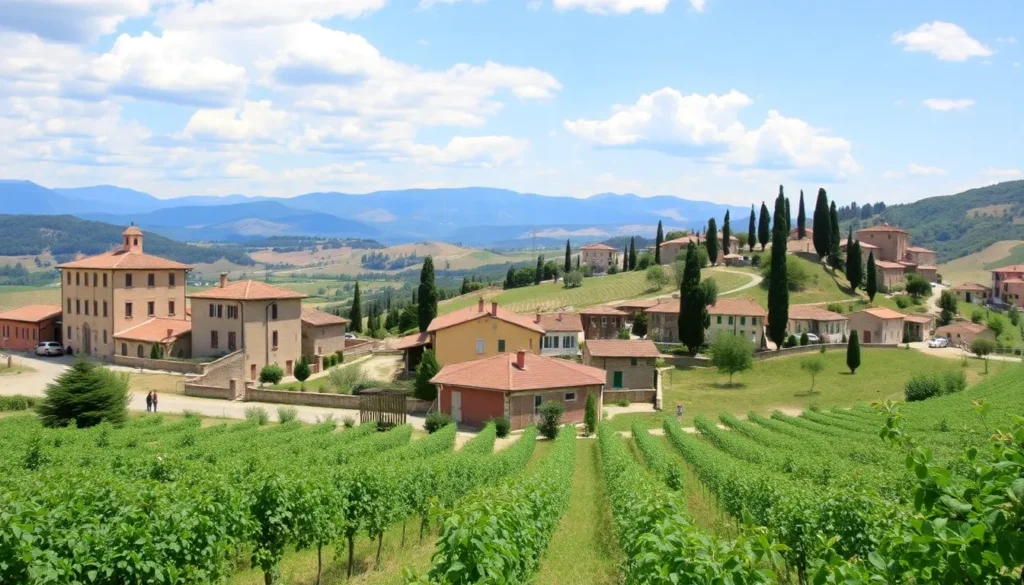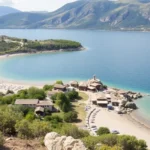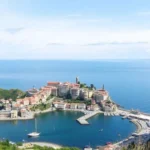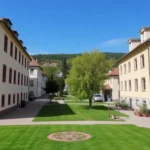Tips for Traveling to Tuscany Independently Without Mistakes

- Understanding the Best Time to Visit Tuscany
- How to Reach Tuscany
- How Many Days Should You Spend in Tuscany?
- Must-See Attractions in Tuscany
- A 7-Day Itinerary for Tuscany
- Getting Around: Is Car Rental Necessary?
- Travel Insurance for Tuscany
- Delicious Tuscan Cuisine
- Essential Tips and Recommendations for Traveling in Tuscany
You've got your ticket to Tuscany, one of the most beautiful regions in Italy, but now the questions start piling up: how do you organize your trip? If you find yourself in this situation, don’t worry! You’re about to discover all the essential tips for traveling to Tuscany. We will cover the best routes, must-see attractions, packing essentials, transportation options, and a wealth of recommendations to ensure your journey is unforgettable.
The mere mention of "Tuscany" evokes images of rolling hills, medieval villages, art-filled cities, thermal baths, vineyards, and breathtaking landscapes. It’s the perfect escape to blend nature with the Italian dolcevita. And let’s not forget the gelato—never leave without indulging in some!
The renowned author Stendhal was so entranced by Florence that he famously coined a syndrome named after his experience—a condition where travelers are awestruck by beauty. To ensure that your trip is filled with love and not overwhelm, let's delve into all the vital advice you need for a seamless adventure in Tuscany.
Understanding the Best Time to Visit Tuscany
Choosing the right time to visit Tuscany can significantly impact your experience. If your plans only involve major cities like Florence or Pisa, any season is suitable, provided you come prepared. Summer can be sweltering, while winter typically brings cold and rain. However, if you wish to immerse yourself in the stunning Tuscan landscapes, spring is the ideal season. The fields are lush and vibrant with flowers, and the weather is pleasant, with fewer tourists than in peak season.
Autumn is also a lovely time to visit, though the landscape shifts to shades of yellow, and rainfall becomes more frequent. Consider the following climate insights:
- Summers are hot and humid.
- Winters are cold and rainy.
- Spring and autumn offer mild temperatures and occasional rain.
To assist in planning your visit, here’s a climate overview for four key Tuscan cities: Florence, Pisa, Grosseto, and Siena. This knowledge will help you pack appropriately and make the most of your time in this enchanting region.
How to Reach Tuscany
Tuscany is accessible via two major international airports: Florence (FLR) and Pisa (PSA). While both airports offer flights from Spain, Pisa tends to have more direct connections. For the best options, we recommend using Skyscanner.
If you're already in Italy, traveling by train to the main cities is convenient. Utilize Italy’s state train service, Trenitalia, or the private service Italotreno. For high-speed trains, book your tickets in advance to secure discounts.
⭐ Get a €10 gift when booking transport through Europe here
How Many Days Should You Spend in Tuscany?
Ideally, you should allocate at least one week to explore Tuscany thoroughly. Here’s a suggested itinerary:
- 2 days in Florence
- 4 days on a road trip through the countryside
- 1 day in Pisa to wrap up your journey
Of course, the more time you can dedicate, the better. Spending ten days allows for a more relaxed pace, letting you savor the sights and local culture without feeling rushed.
Must-See Attractions in Tuscany
It’s crucial to understand that Tuscany is much more than Florence. The best approach to a Tuscan adventure is to wander through its picturesque countryside, visit charming medieval towns, and indulge in the local cuisine at wonderful agriturismos. And yes, Florence is incredible, but there’s a lot more waiting for you!
⭐ Check out our post on 20 must-see attractions in Tuscany.
A 7-Day Itinerary for Tuscany
During our week-long trip, we revisited Florence, then embarked on a scenic road trip through Chianti, Val d’Orcia, and Maremma, concluding in Pisa. Here’s how our itinerary unfolded:
Days 1-2: Florence
Day 3: Florence to San Gimignano
- Total distance: 115 km
- Must-see stops: Greve in Chianti, Montefioralle, Panzano In Chianti, Radda in Chianti, Castellina in Chianti, and San Gimignano
- Read the article
- Accommodation in San Gimignano
Days 4-5: Montepulciano and Pitigliano or Sorano
- Total distance: 125 km
- Highlights: Monticchiello, Bagno Vignoni, Castiglione d´Orcia, Terme Libere di San Filippo, Radicofani, Pitigliano, and Sorano
- Read the article
- Accommodation in Pitigliano / Accommodation in Sorano
Days 6-7: Pitigliano or Sorano to Pisa
- Total distance: 270 km
- Must-visit: Etruscan Necropolis of Sovana, Saturnia Thermal Springs, Montemerano, Larderello (home to an impressive geothermal plant!), and Volterra
- Read the article
- Accommodation in Pisa
⭐ For detailed insights on our trip, check out our post on a road trip through Tuscany.
Getting Around: Is Car Rental Necessary?
If you plan to follow a similar itinerary, the best option is to rent a car. This grants you total freedom to explore, allowing you to plan stops at your leisure and discover hidden gems that may not be on the tourist map.
For route calculations, Google Maps is quite reliable, but always review your route beforehand to avoid unexpected detours. While the highways are generally well-maintained, be cautious on local roads, which can be quite narrow and winding. Additionally, be aware of the toll highways; we often opt to avoid them to enjoy the journey at a leisurely pace and save money.
Also, be mindful of entering larger towns and cities where there are restricted traffic zones (ZTL), typically in historic areas. These zones are marked with signs, and it's easy to overlook them—violating these regulations can result in hefty fines as they are monitored by cameras.
We typically reserve rental cars through Auto Europe, which compares prices across various local agencies. If you're uncertain about renting, check out our guide on renting a car and driving in Italy.
Only consider public transportation if your focus is primarily on visiting larger cities. Check Trenitalia for train routes, and services like Flixbus or Autolinee Toscane for bus options.
Finally, you can also choose to set up base in a city and take guided excursions to key attractions across Tuscany.
⭐ Check out the best excursions in Tuscany.
Travel Insurance for Tuscany
Even though we are within the EU and the European Health Insurance Card provides access to medical assistance, we still highly recommend getting a separate travel insurance. This ensures you don’t rely solely on the public healthcare system of each country, especially since Italy’s system can be unpredictable.
Accidents can happen, and in such cases, having prompt and appropriate care is crucial. With the ongoing impact of Covid, it’s more important than ever to be prepared. Securing a good travel insurance plan for your days in Italy is quite affordable and can provide peace of mind.
⭐ Enjoy a 5% discount with Iati Insurance here.
Delicious Tuscan Cuisine
One of the most compelling reasons to travel to Tuscany is the opportunity to savor its delectable cuisine! Tuscan food is simple yet flavorful, using basic, high-quality ingredients prepared masterfully. Here are some traditional dishes you must try:
- Crostini: Toasted Tuscan bread topped with various spreads, like tomato and garlic or pâté.
- Pappa al pomodoro: A vegan-friendly dish, this is a tomato soup combined with bread, basil, salt, and olive oil.
- Pappardelle al cinghiale: A delightful pasta dish featuring wild boar ragù.
- Pici all’aglione: Pasta with a tomato, garlic, and a hint of chili sauce.
- Fiorentina: A hefty T-bone steak grilled to perfection and served rare—prepare your wallet for this treat!
⭐ For more culinary insights, check out our article on Tuscan gastronomy.
Essential Tips and Recommendations for Traveling in Tuscany
Before wrapping up, jot down these final tips to ensure your trip to Tuscany is flawless:
- Florence requires some organization. If you plan to visit the Uffizi Gallery, it's advisable to purchase tickets in advance. If you can, consider joining a guided tour. Also, book your accommodations ahead of time. For more tips, check out our recommendations for visiting Florence.
- Don’t fall into the trap of thinking that Pisa is just about the famous tower. The city has much to offer—check out the best things to do in Pisa in one day.
- If you have extra time, make sure to take a beautiful excursion to Cinque Terre. The easiest route is to take a train to La Spezia, the gateway to this picturesque area. Here are some tips for visiting Cinque Terre.
- A memorable experience in Tuscany is to visit a vineyard and enjoy some wine tastings. While Chianti is the most famous wine, there are many others worth trying. Here are some themed tours: Vineyard tour in Montepulciano, Chianti wine tour, and Wine tasting in Montalcino.
- If you haven't already, consider getting a special travel card to avoid foreign transaction fees. These cards are convenient and secure, making them perfect for travel. For the best options, check our guide on the best travel cards.
With these tips, you should now have a clearer picture of how to plan your trip to Tuscany. If you still have questions, feel free to leave your queries in the comments 🙂
| Save on your trip |
| Compare and find cheap flights here |
| Find accommodation at the best prices here |
| Book activities and excursions in Spanish here |
| Get a 5% discount on your travel insurance with IATI here |
| Book airport transfers here |
| Get a gift of €10 when booking transport in Europe here |
| Learn how to withdraw cash without fees here |
| Get a 5% discount on your eSIM from Holafly here |
| Rent a car with the best offers here |
| Compare prices for van rentals here |
| The best books and travel guides here |
| Read all our articles about Italy |




Deja una respuesta